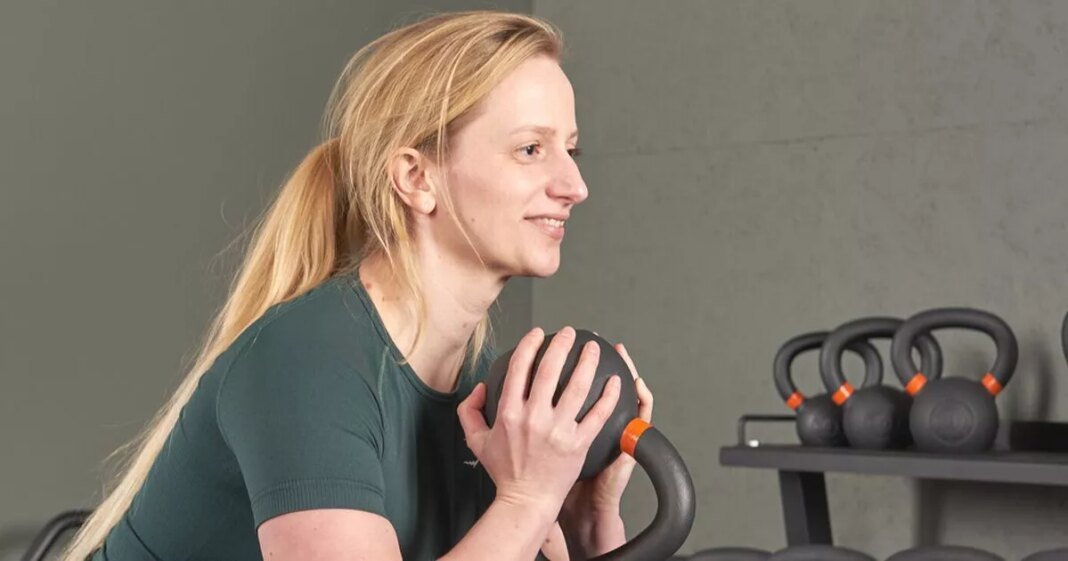Those who suffer from endometriosis can find it challenging to exercise due to symptoms associated with the condition. A fitness expert who has the chronic disease has shared her vital advice on how to manage it when it comes to working out.
In the UK, approximately 1 in 10 women and girls of reproductive age are diagnosed with endometriosis, according to Endometriosis UK. This chronic disease, which affects a staggering 10 per cent of people worldwide, is caused by cells similar to those lining the uterus growing in other parts of the body.
These often affect the ovaries, fallopian tubes and the tissue lining the pelvis.
The impact of endometriosis on someone’s life can be significant, with symptoms varying from chronic pain, fatigue, pelvic and period pains, anxiety and low moods. The condition can also affect relationships and intimacy due to severe and painful symptoms during sexual intercourse. As a result of some symptoms, it can be more challenging to exercise.
Marking Endometriosis Awareness Month, fitness expert at Mirafit (mirafit.co.uk), Lisanne Van Ingen has shared her advice and how she trains to manage her own endometriosis diagnosis.
She says: “Regular and progressive training may seem less straightforward for people with endometriosis – and it often is. But it is certainly not impossible to enjoy exercise and train hard with this condition.”
Lisanne shares further: “Over the years, I have found ways to train that work for me. It has been a road of trial and error, but the overall benefits of moving and challenging my body have always outweighed the negatives. If you suffer with endometriosis and are trying to find an exercise routine that works, I have the following tips for you…”
The fitness expert explains: “Some women find that heavy lifting triggers pain. Others have experienced something similar when they run or jump. However, there is no conclusive evidence that suggests certain exercises should be off limits for people with endometriosis. This then means that you get to experiment with what type of exercise works for you.”
“Endometriosis can cause a very wide range of symptoms that may evolve over time. What works for you one month may not work the next. It’s important that you are open to the signals your body is sending you and are flexible with how you train. Pushing yourself through intense workouts when your body needs rest can aggravate symptoms and lead to injury,” Lisanne advises.
The expert also says: “If you are having trouble finding a type of exercise or routine that works with your symptoms, don’t be afraid to ask for help. A specialised personal trainer or medical professional can guide you in the right direction.”
While rest is essential in managing endometriosis, Lisanne says movement is vital. “I would also encourage you to keep moving when you can – even when it’s just a short walk outside or some light mobility exercises. Staying active, even on rough days, helps to keep exercise a part of your routine, which can make a huge difference in how you feel both physically and mentally.”
She adds: “Endometriosis doesn’t mean you have to give up on sports or fitness. It may, however, mean you need to be more flexible with your training and patient with yourself. But, when you consistently manage to take small steps in the right direction, you can still achieve your fitness goals.”
To find out more, you can visit Lisanne’s page here: mirafit.co.uk/blog/how-i-train-with-endometriosis
At Reach and across our entities we and our partners use information collected through cookies and other identifiers from your device to improve experience on our site, analyse how it is used and to show personalised advertising. You can opt out of the sale or sharing of your data, at any time clicking the “Do Not Sell or Share my Data” button at the bottom of the webpage. Please note that your preferences are browser specific. Use of our website and any of our services represents your acceptance of the use of cookies and consent to the practices described in our Privacy Notice and Cookie Notice.


